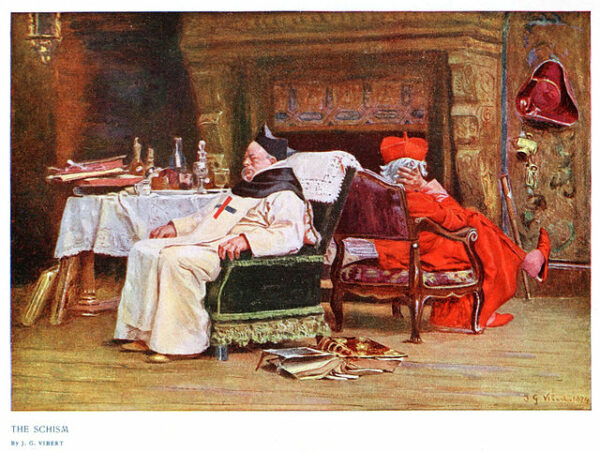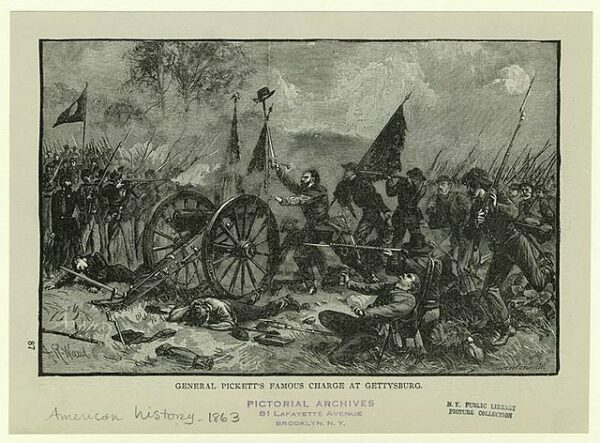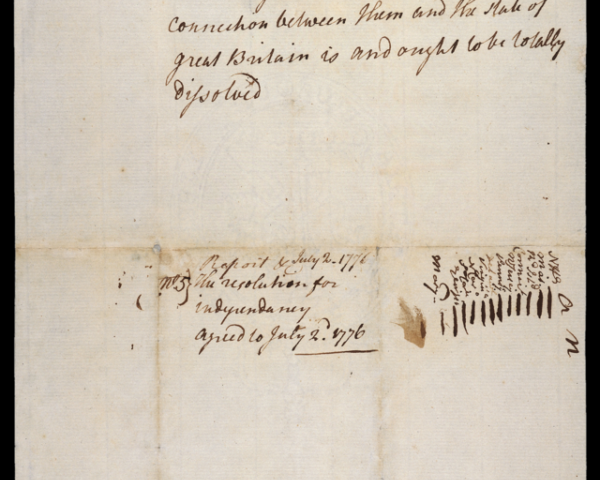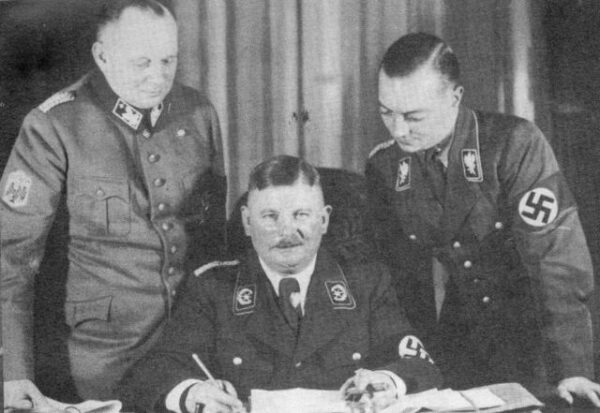On July 16, 1054, Christendom split in two. On that day, National Geographic explains, “Patriarch of Constantinople Michael Cerularius was excommunicated from the Christian church based in Rome, Italy. Cerularius’s excommunication was a breaking point in long-rising tensions between the Roman church based in Rome and the Byzantine church based in Constantinople (now called Istanbul). The resulting split divided the European Christian church into two major branches: the Western Roman Catholic Church and the Eastern Orthodox Church. This split is known as the Great Schism, or sometimes the “East-West Schism” or the “Schism of 1054.”
The Great Schism came about due to a complex mix of religious disagreements and political conflicts. One of the many religious disagreements between the western (Roman) and eastern (Byzantine) branches of the church had to do with whether or not it was acceptable to use unleavened bread for the sacrament of communion. (The west supported the practice, while the east did not.) Other objects of religious dispute include the exact wording of the Nicene Creed and the Western belief that clerics should remain celibate.
These religious disagreements were made worse by a variety of political conflicts, particularly regarding the power of Rome. Rome believed that the pope—the religious leader of the western church—should have authority over the patriarch—the religious authority of the eastern church. Constantinople disagreed. Each church recognized their own leaders, and when the western church eventually excommunicated Michael Cerularius and the entire eastern church. The eastern church retaliated by excommunicating the Roman pope Leo III and the Roman church with him.
While the two churches have never reunited, over a thousand years after their split, the western and eastern branches of Christianity came to more peaceable terms. In 1965, Pope Paul VI and Patriarch Athenagoras I lifted the longstanding mutual excommunication decrees made by their respective churches.”
The consequences of the East-West Schism were significant and long-lasting. The division severed the unity of Christendom and created two distinct branches of Christianity: the Eastern Orthodox Church and the Roman Catholic Church. It led to the establishment of separate hierarchies, liturgical practices, and doctrinal developments in the East and West. Additionally, the schism had political ramifications, as it affected the relationship between the Byzantine Empire and the Papal States, and contributed to the weakening of Byzantine authority.
Moreover, the East-West Schism had lasting cultural impacts. It deepened the divide between Eastern and Western Europe, contributing to the development of distinct cultural identities. The Byzantine Empire and its Orthodox Christianity became synonymous with the East, while the Roman Catholic Church and Latin culture represented the West. These cultural divisions would continue to shape the history of Europe for centuries to come.
Today, there two churches have begun to work on ways they can reconcile. In 2016, Pope Francis and Patriarch Kirill met in Havana, Cuba, and released a joint statement addressing the longstanding divisions and tensions between the Roman Catholic Church and the Russian Orthodox Church. They emphasized the need for unity and cooperation among Christians, particularly in the face of contemporary challenges such as secularism, materialism, and persecution of Christians in various parts of the world.
The joint declaration covered several topics, including the persecution of Christians, the crisis of the family, the protection of human life from conception to natural death, the importance of marriage, and the defense of Christian values. It also highlighted the shared commitment of both churches to promoting social justice, peace, and the preservation of the natural environment.
While it also acknowledged the differences between the two churches, particularly theological, ecclesiological, and regarding pastoral matters, the statement expressed a commitment to continuing discussions and working toward resolving those differences in a spirit of mutual understanding and respect.
Many Christians viewed The Havana Declaration as a significant step towards improving relations between the Roman Catholic Church and the Russian Orthodox Church. The meeting itself and the subsequent joint declaration symbolized hope for greater unity and solidarity among Christians worldwide.






